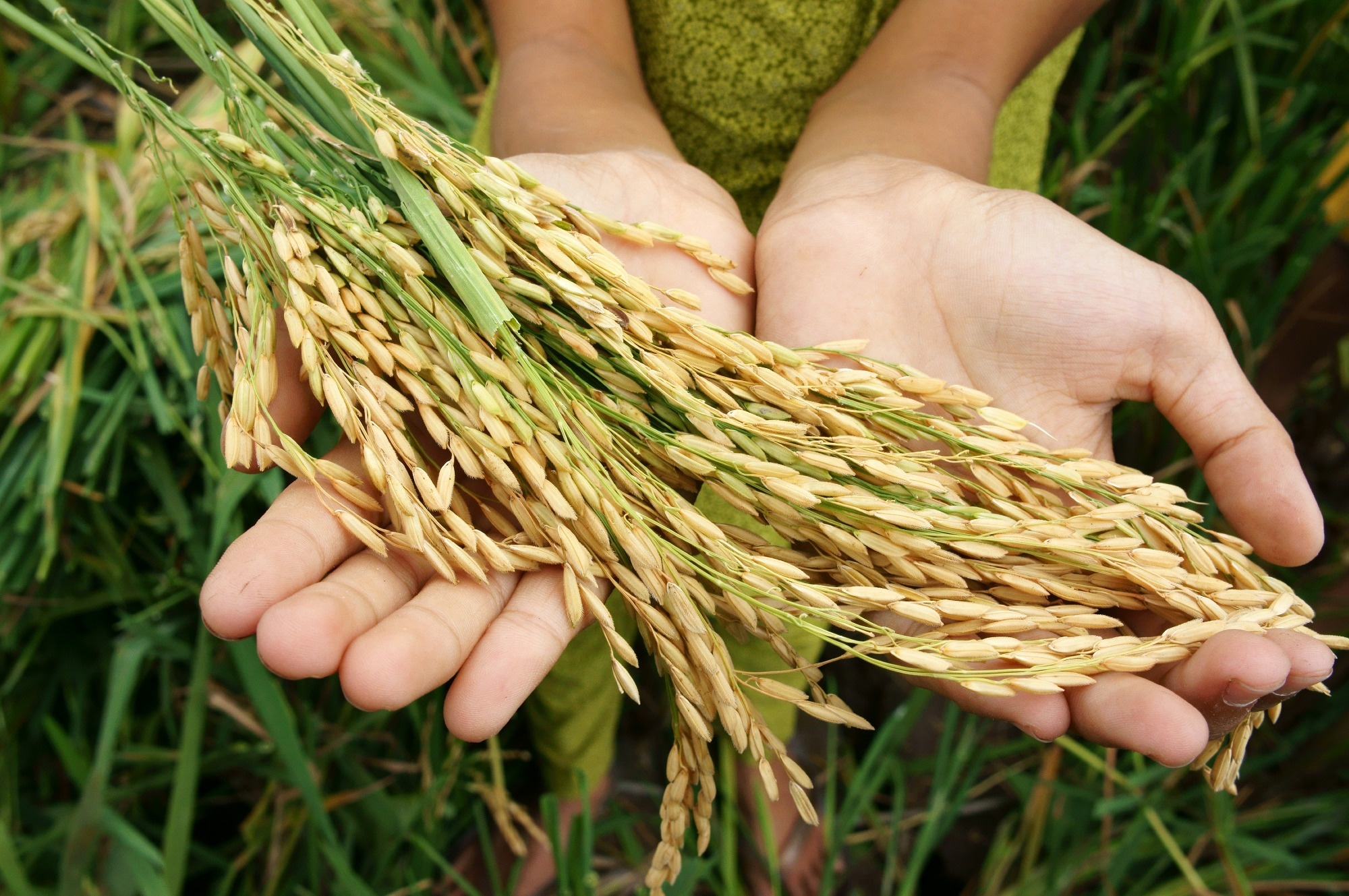Strengthening and ensuring continued food security for the world’s growing population of over 8 billion people is a key challenge in the 21st century, especially as the world is dealing with challenges such as climate change and geopolitical instability. One strategy for strengthening food security in a changing world is biofortification. This article will explore the subject of biofortification.
 Image Credit: xuanhuongho/Shutterstock.com
Image Credit: xuanhuongho/Shutterstock.com
Introduction to Biofortification and Its Impact on Food Security
Ending all world hunger is a central aim of the United Nations’ Sustainable Development Goals, as set forth in UN-SDG2.1 The goal is to achieve this by 2030, only a few short years away. Quite simply, this is a daunting task that will require specific and wide-reaching actions and policy interventions.
Enhancing the nutritional value of staple crops is central to ensuring that a growing world population has access to foods with enough vitamins, minerals, antioxidants, and so forth in order to keep people healthy. Micronutrient malnutrition, otherwise known as “hidden hunger,” affects more than two billion people globally, with a higher prevalence in developing nations and areas such as South Asia and Africa.1
Traditional forms of fortification, such as large-scale food fortification (LSFF), involve adding nutrients to food during processing. Fortification strategies have been commonplace in developed economies such as the US, UK, and Europe since the 1920s but are difficult to access for people in the developing world2
In contrast to LSFF, biofortification involves improving the nutritional value of food crops and fortifying them before harvesting. It is generally seen as a more cost-effective approach and can benefit populations in LMICs and rural areas of some developed nations that may not otherwise have access to traditional industrially fortified foods.2
In order for a biofortification strategy to be considered successful, three requirements must be met. Firstly, micronutrient density, crop yield and density must be high whilst being cost-effective for farmers and consumers. Secondly, the health efficacy must be demonstrated. Thirdly, biofortified crops must be adopted and consumed, which requires education, incentives, and an effective delivery strategy.1
The Science Behind Enhancing Nutritional Value in Crops
A number of agricultural technologies are employed in biofortification strategies to enhance the nutritional value of staple crops such as wheat, beans, cassava, sweet potatoes, and rice.
Conventional breeding techniques are one approach to biofortification that relies on established agricultural practices to improve staple crops' nutritional content over a few generations. Transgenic approaches can be used to speed up this process by manipulating the genes of crops.3
Agronomic biofortification uses micronutrient-rich mineral fertilizer to the soil or leaves of plants, increasing their nutritional content. [4] Each strategy has its own approaches, benefits, and drawbacks, but the overall aim is the same: improve the health of underserved populations by providing a cost-effective and efficacious local strategy that improves food security in disadvantaged regions.
Key Biofortified Crops and Their Role in Combating Malnutrition
To date, a number of crops have been biofortified, improving their nutritional content. Legumes, cassava, sweet potato, and rice have been biofortified with iron. Biofortification has improved the zinc content of maize, wheat, and beans. Sweet potato and maize have been biofortified with Provitamin carotenoids. Additionally, amino acid and protein-rich sorghum has been produced.5
These micronutrients are vital for health: iron deficiency, for example, leads to anaemia. Zinc is essential for growth. Provitamin A carotenoids have powerful antioxidant properties. Protein is needed by the body for growth, tissue repair, and manufacturing enzymes. Biofortifying crops with nutrients such as these ensures that people get a healthy amount in their diet.
Implementing Biofortification Strategies in Global Agriculture
Implementing biofortification strategies will have vast benefits for global agriculture. While still emerging, some notable successes have been achieved in recent years.
HarvestPlus has been working with partners since 2013, successfully using conventional plant breeding to enrich staple crops with essential micronutrients. The company has been working in Nigeria to produce vitamin A-rich cassava, biofortified pearl millet in India, and nutritionally-enhanced orange sweet potato in Uganda.6
This initiative resulted in the release of 242 biofortified crop varieties onto the world market in over 30 countries by the end of 2019, playing a key role in the development of this emerging field of study.
The Global Alliance for Improved Nutrition (GAIN) has been working with farmers and organizations in Nigeria, Kenya, Tanzania, India, Bangladesh, and Pakistan, producing over 1 million kg of vitamin-A maize and over 4 million kg of Vitamin-A cassava, with over a million farmers taking part reported increased production.7
The work of GAIN and HarvestPlus demonstrates how biofortification strategies are starting to gain figurative fruit across the world. Whilst key challenges still exist, there is great promise in this area of agricultural science.
 Image Credit: Attasit saentep/Shutterstock.com
Image Credit: Attasit saentep/Shutterstock.com
The Future of Food Security: The Potential of Biofortification
As mentioned at the beginning of this article, making hunger a thing of the past is a key aim of the UN’s Sustainable Development Goals. Food security is a particularly challenging area, as supplies of nutritionally balanced crops can be easily disrupted by geopolitical tensions and the effect of climate change.
Taking a local approach and improving the ability of farmers and producers to grow nutrition-rich staple crops such as wheat, cassava, sorghum, rice, and sweet potato will go a long way toward ensuring food security and access to basic nutrition in developing nations.
Biofortification, which has emerged in recent years as a viable alternative to traditional fortification methods that improve nutrient content during processing, will doubtless be the focus of many commercial agricultural projects in years to come, demonstrating how an innovative approach to a commonplace problem can bear fruit.
Sources and Further Reading
- Van Der Straeten et al. (2020) Multiplying the efficiency and impact of biofortification through metabolic engineering Nature Communications 11: 5203 [online] nature.com. Available at:https://www.nature.com/articles/s41467-020-19020-4
- Olson, R et al. (2021) Food Fortification: The Advantages, Disadvantages and Lessons from Sight and Life Programs Nutrients 13(4): 1118 [online] ncbi.nlm.nih.gov. Available at:https://www.ncbi.nlm.nih.gov/pmc/articles/PMC8066912/
- Ofori, K.F (2022) Improving nutrition through biofortification–A systematic review Front. Natur. 9 [online] ncbi.nlm.nih.gov. Available at:https://www.ncbi.nlm.nih.gov/pmc/articles/PMC9784929
- De Valença, A.W et al. (2017) Agronomic biofortification of crops to fight hidden hunger in sub-Saharan Africa Global Food Security 12 pp. 8-14 [online] sciencedirect.com. Available at:https://www.sciencedirect.com/science/article/pii/S2211912416300487
- Foley, J.K (2021) Scaling Up Delivery of Biofortified Staple Food Crops Globally: Paths to Nourishing Millions Food Nutr Bull. 42(1) pp. 116-132 [online] ncbi.nlm.nih.gov. Available at:https://www.ncbi.nlm.nih.gov/pmc/articles/PMC8060734/
- World Health Organization (2023) Biofortification of staple crops [online] who.int. Available at:https://www.who.int/tools/elena/interventions/biofortification
- GAIN (website) Commercialization of Biofortified Crops (CBC) Fact Sheet: 2019-2022 [online] gainhealth.org. Available at:https://www.gainhealth.org/sites/default/files/publications/documents/Factsheet_Revised_0.pdf
Last Updated: Mar 28, 2024